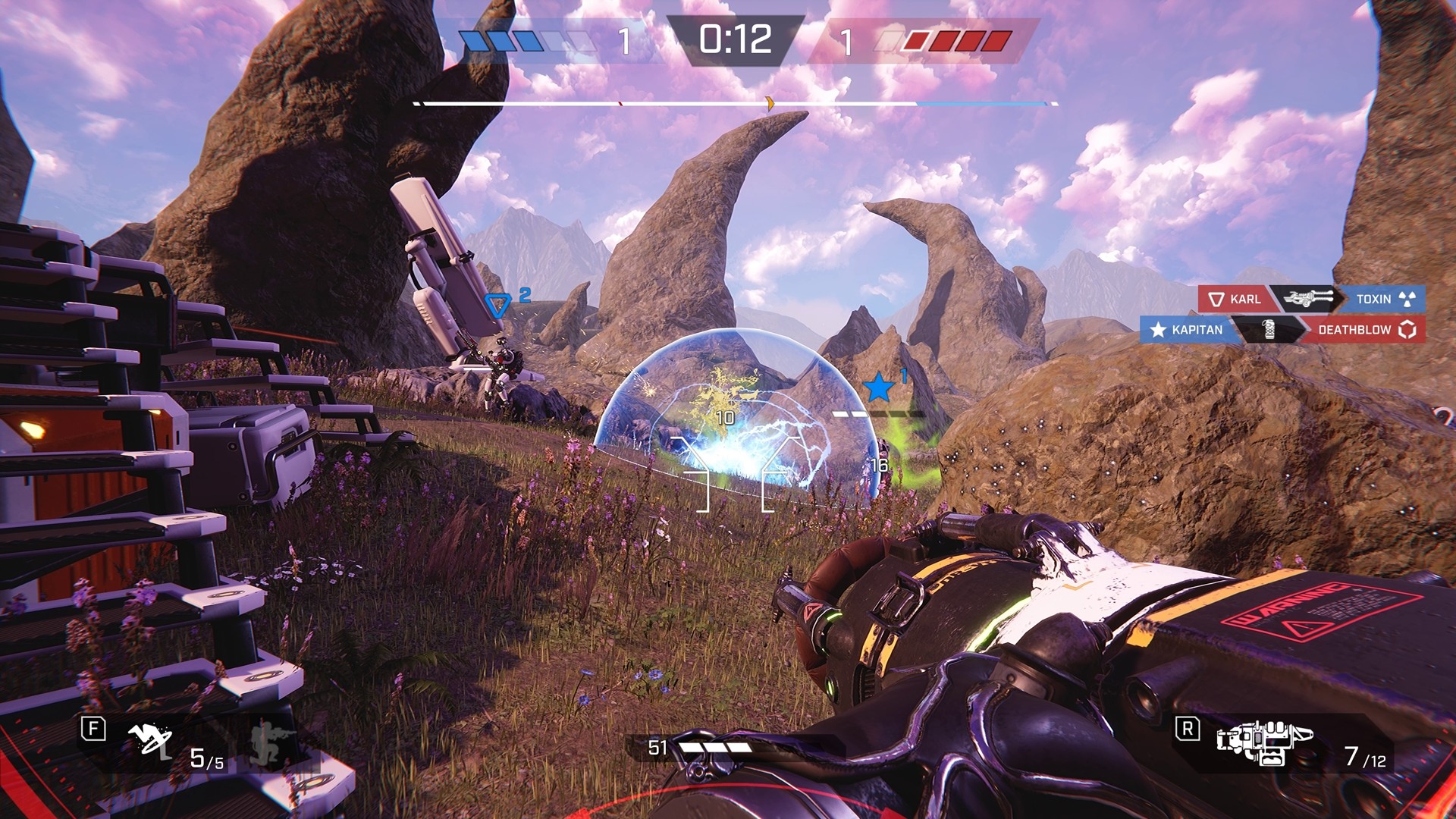Lemnis Gate is a refreshing take on the FPS genre | Hands-on preview
If Christopher Nolan made a game, I’m fairly sure Lemnis Gate would be it. Whilst it seems like a straightforward FPS on the outside, dive a little deeper and the many layers of gameplay are just waiting to be explored. Complex strategies and an intricate system. Numerous operatives with different abilities and weapons. It’s going to be tricky to try and explain it, so bear with me.
Lemnis Gate: How it works
Each match plays out over two rounds, with every round featuring five loops of the same 25 seconds. This is where the turn-based elements of Lemnis Gate come in. Depending on what mode you’re playing, you use these 25 seconds to either destroy Resistors, collect Exotic Matter, or wipe out the enemy. Depending on the chosen operative, you can approach each mode however you want. However, it’s important to think one (or five) steps ahead.

Sure, taking out a Resistor on your first loop might seem wise, but if not done carefully, they could wipe you out on their turn. Operatives have a whole manner of weapons, such as sniper rifles, rocket launchers, and assault rifles. They also have special abilities like teleportation, bullet time, and turret deployment. 25 seconds never feels like a lot of time, so thinking about your current and next move work in tandem.
Refreshing gameplay
With every new loop, the holograms or ghosts of the previous turn are shown, and the action starts to flesh out. Every previous decision you’ve made plays out before your eyes. The consequences of your strategies are happening alongside you. It’s rather smart. It’ll take a bit of time to get used to, but when it all unfolds, Lemnis Gate shows how smart it truly is.
I wonder just how successful Lemnis Gate is likely to be. People expecting games like Apex Legends may be disappointed. It has the ‘Hero Shooter’ feel to it, but gameplay is more ordered and tactical. It’s not about picking one character and playing through a match with them, killing as many of the opposition as possible. It’s more American football than football. More Houses of Parliament than House of Cards.
Lemnis Gate: An original concept
Once you’ve gotten to grips with the Operatives and the fundamental concept of Lemnis Gate, battles are great. It might not be everyone’s idea of fun, but I appreciated the process of planning and executing. You can never choose the same operative twice in a game. This forces you to think which might be more suited to the final loop. The idea at the heart of every match is brilliant, and this forms the basis of some of the most chaotic and intense action I’ve seen online.

Watching an opponents turn play out can give you new tactics on the fly. If they are simply trying to kill your operatives, those resistors you’ve destroyed are now in tact. There’s a constant shift in how matches play out. It is just as important to monitor the enemy as it is to try and complete the objective. It’s frustrating, but completely original. Although this was only a beta, it’ll be interesting to see how Ratloop Games take the feedback from the it and improve, especially as the game has been delayed. I’ll be back to explore Lemnis Gate, and so should you.




